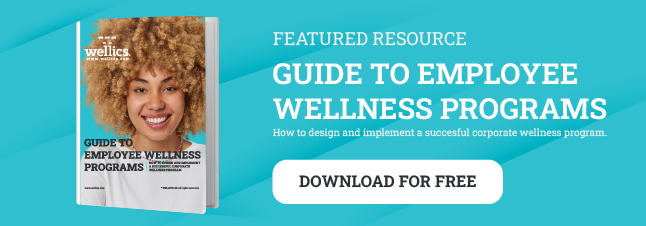Carrie Solomon is a freelance health writer, web copywriter, and passionate wellness…
Almost one billion people worldwide are struggling with a mental health issue, costing the global economy $1 trillion each year. So it makes sense that 78% of organizations prioritize having a healthy workplace, by either offering mental wellness resources or planning to offer such resources within the next year. In this article, you’ll learn how to create a mentally healthy environment for your team, too.
What is a Mentally Healthy Workplace?
A mentally healthy workplace is one that supports and promotes the mental well-being of its employees. It’s an organization where employees feel supported, respected, and free to talk about their concerns and/or stress.
Organizations like this recognize and manage potential risks for employees and offer support for those with mental health conditions. They also encourage their staff to have a healthy work-life balance, and to reduce stress and anxiety levels.
The Importance of Prioritizing Mental Health in the Workplace
The health and success of any organization depend on the mental health of the people in it. If your staff suffers from burnout, anxiety, depression, or other mental health issues, you’re likely to have higher rates of:
- Absenteeism
- Low productivity, motivation, and engagement
- Turnover
- Risks to your reputation
- Rising expenses due to all of the above, plus higher insurance costs due to previously neglected employee health issues
Studies show that employee mental wellness significantly boosts creativity and innovation in the workplace. Plus, happy, productive employees are more likely to stick around for the long haul. So having a healthy workplace truly benefits everyone at your organization.
Developing a Healthy Workplace Environment
Some strategies for creating a healthy workplace include:
1. Establishing open communication. Having good communication is essential for a healthy workplace. While challenges may be unavoidable, they might lead to something positive, such as improved communication, camaraderie, and problem-solving. Open communication also fosters respect and support–all of which benefit mental health and your organization, as a whole.
2. Promoting and celebrating inclusivity. Prioritizing inclusivity can help you not only attract great talent, but also make employees feel accepted and respected. Be inclusive in everything you do, including how you put together your teams, how you communicate, and your daily practices.
3. Encouraging healthy work-life balance. Studies show that after-hours emails can cause chronic stress and fatigue. And so can an “always on” attitude, in general. Keep business communications to work hours whenever possible, and encourage your employees to prioritize their home lives.
4. Creating a healthy culture. You’ll boost your retention rates substantially as well as your employees’ mental health by encouraging your staff to participate in team-building activities, celebrations, and other company events. Another great strategy is addressing any mental health issues head-on by encouraging employees to utilize a corporate wellness program.
Create a Healthy Workplace for Your Employees with Corporate Wellness Programs
The popularity of creating mentally healthy workplaces is definitely here to stay. And it’s easier than ever to get onboard with corporate wellness platforms like Wellics.
Wellics helps busy managers and organizational leaders educate, motivate, inspire, and reward their teams for prioritizing mental health through proven tools and resources like mindfulness meditation, stress reduction, exercise, and more. And you can easily track your employees’ progress and use customized metrics to measure productivity, engagement, and retention, as well as organizational costs.
Learn more about Wellics by booking a demo today.
Sources:
- https://www.ncbi.nlm.nih.gov/pmc/articles/PMC8782676/
- https://www.entrepreneur.com/en-ae/growth-strategies/achieving-diversity-in-the-workplace-is-enabling/400847
- https://www.ncbi.nlm.nih.gov/pmc/articles/PMC9821520/
- https://www.pc.gov.au/__data/assets/pdf_file/0017/240812/sub289-mental-health.pdf
- https://www.workplacementalhealth.shrm.org/wp-content/uploads/2022/04/Mental-Health-in-America-A-2022-Workplace-Report.pdf
- https://www.thelancet.com/journals/langlo/article/PIIS2214-109X(20)30432-0/fulltext#:~:text=From%20addiction%20to%20dementia%20to,US%24%201%20trillion%20each%20year.










